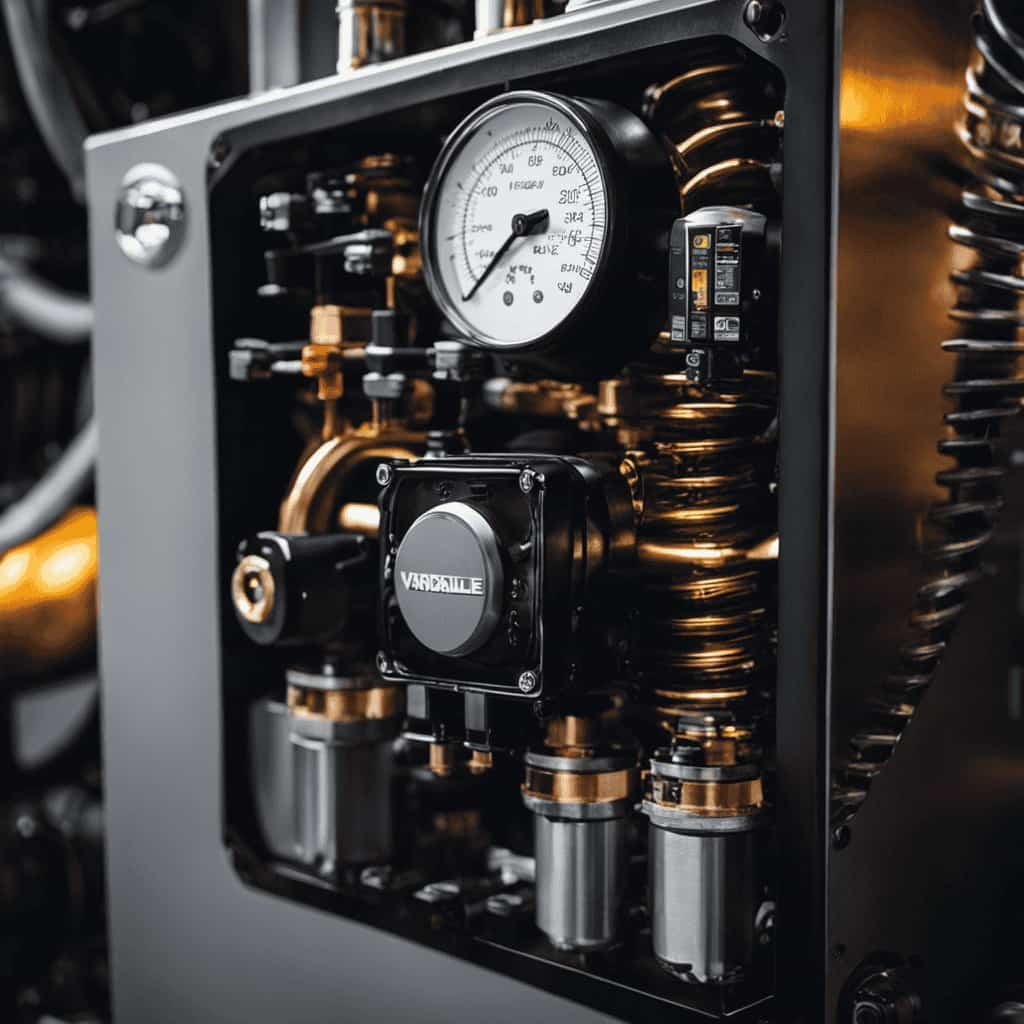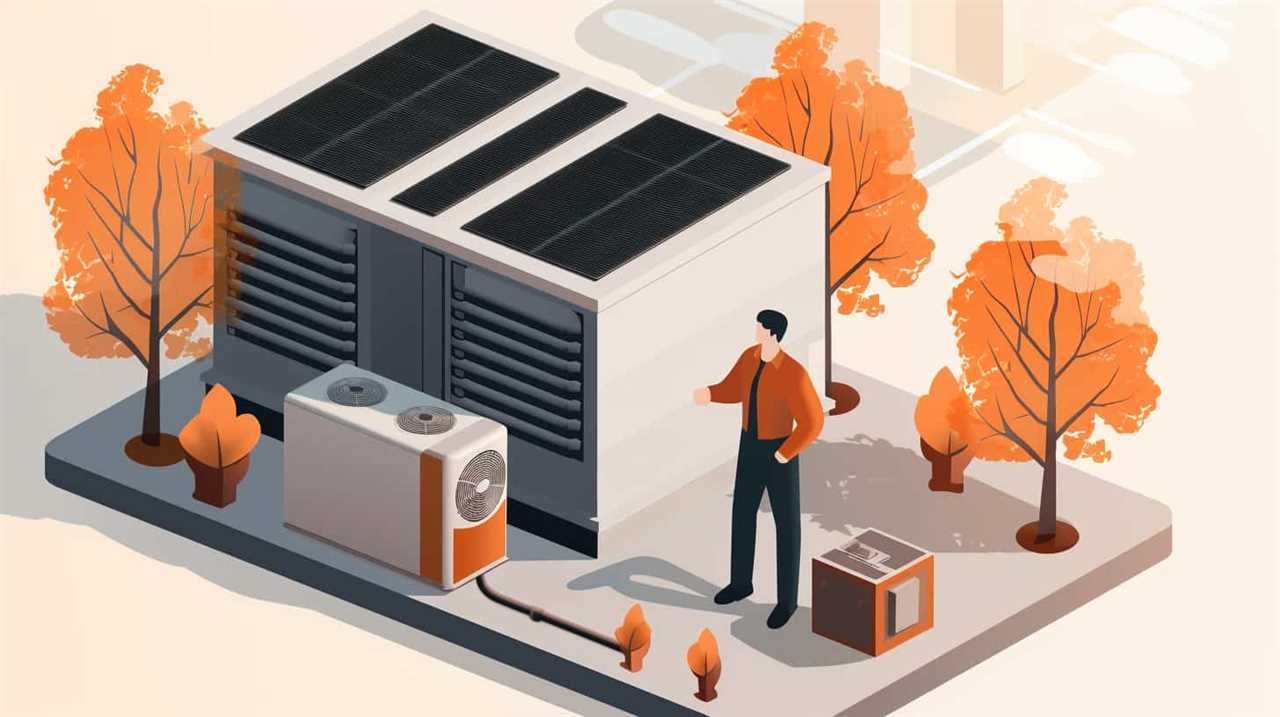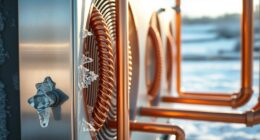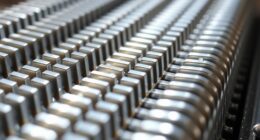We’ve explored the realm of efficiency and performance in residential heat pumps, uncovering important findings and useful advice.
Did you know that a properly sized and installed heat pump can save up to 30% on heating and cooling costs?
In this article, we explore the factors that affect heat pump performance, evaluate energy efficiency ratings, and highlight the importance of regular maintenance.
Join us as we compare different models and help you make informed decisions for optimal efficiency and performance.

Key Takeaways
- SEER and HSPF ratings are important metrics for evaluating heat pump efficiency.
- Proper sizing and installation are crucial for optimal performance and efficiency.
- Climate conditions, such as extreme temperatures, can impact heat pump performance.
- Independent verification and careful evaluation of energy efficiency ratings are necessary for accurate comparisons.
Understanding Heat Pump Efficiency Metrics
Let’s begin by understanding the efficiency metrics of heat pumps. When it comes to heat pump efficiency standards, two important metrics are used: Seasonal Energy Efficiency Ratio (SEER) and Heating Seasonal Performance Factor (HSPF). SEER measures the cooling efficiency of a heat pump, while HSPF measures its heating efficiency.
These metrics are crucial in evaluating the energy consumption and overall performance of heat pumps. To accurately assess the efficiency of a heat pump, an energy consumption analysis is conducted. This analysis involves measuring the amount of energy consumed by the heat pump in relation to the amount of heat or cooling it provides.
Factors Affecting Residential Heat Pump Performance
One of the factors that can significantly affect the performance of residential heat pumps is the size and capacity of the unit. Heat pump technology advancements have led to the development of more efficient and compact units, allowing for better performance in smaller spaces. It’s important to ensure that the heat pump is properly sized for the space it’s intended to heat or cool. Undersized units may struggle to meet the heating or cooling demands of the space, leading to decreased efficiency and increased energy consumption.
On the other hand, oversized units may cycle on and off frequently, resulting in reduced efficiency and increased wear and tear on the system. Additionally, the impact of climate on heat pump performance can’t be overlooked. Extreme temperatures, either hot or cold, can affect the efficiency and performance of heat pumps, requiring them to work harder to maintain desired temperatures.

Therefore, it’s crucial to consider the climate conditions when selecting and installing a residential heat pump.
Evaluating Energy Efficiency Ratings for Heat Pumps
When evaluating energy efficiency ratings for heat pumps, it’s crucial to consider the reliability and accuracy of the ratings. These ratings provide a standardized measure of a heat pump’s efficiency, allowing consumers to compare different models.
However, it’s important to note that not all rating systems are created equal, and some may be more reliable and accurate than others. Therefore, it’s essential to carefully evaluate and compare the energy efficiency ratings of heat pumps to make informed decisions.
Rating Reliability and Accuracy
We can evaluate the reliability and accuracy of energy efficiency ratings for heat pumps. When it comes to rating accuracy, it’s essential to rely on standardized performance assessment methods.
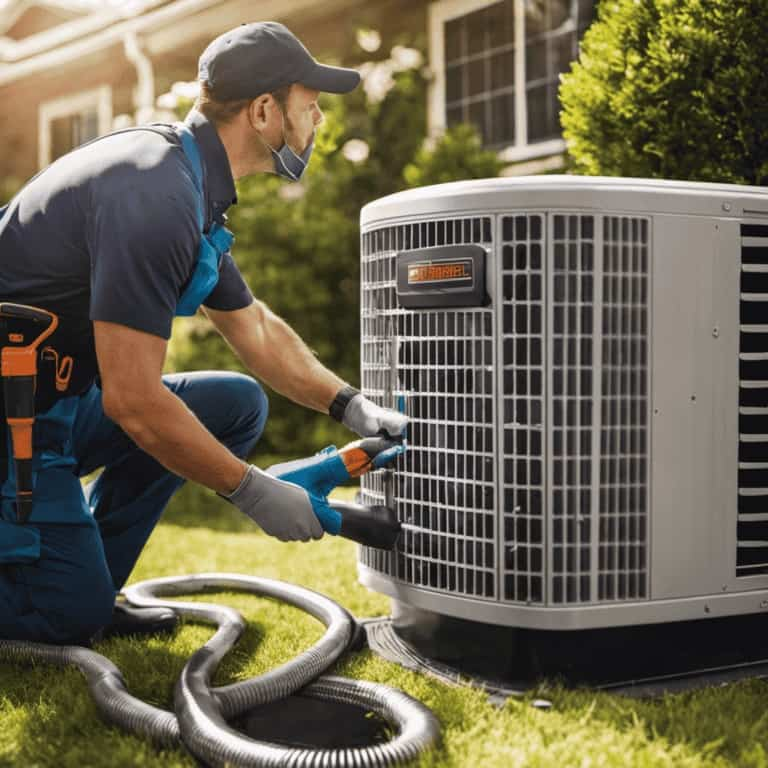
Here are three key factors to consider in evaluating the reliability and accuracy of energy efficiency ratings for heat pumps:
-
Testing Procedures: The rating accuracy heavily relies on the testing procedures used. It’s crucial to ensure that the testing protocols are consistent, repeatable, and representative of real-world operating conditions.
-
Certification Programs: Look for heat pumps that have been certified by recognized and reputable certification programs. These programs ensure that the energy efficiency ratings are reliable and accurate.
-
Independent Verification: Seek out independent verification of energy efficiency ratings. Third-party organizations can provide unbiased testing and verification, ensuring that the ratings are trustworthy.

By considering these factors, we can make informed decisions when selecting heat pumps based on their energy efficiency ratings.
This leads us to the next section, where we’ll discuss comparative efficiency standards.
Comparative Efficiency Standards
To accurately evaluate energy efficiency ratings for heat pumps, we should compare them against standardized comparative efficiency standards. These standards provide a benchmark for measuring the performance and energy consumption of heat pumps. By comparing efficiency ratings against these standards, we can determine how well a heat pump performs in terms of energy efficiency and make informed decisions about which model to choose.
One widely recognized standard is the Seasonal Energy Efficiency Ratio (SEER), which measures the cooling efficiency of a heat pump. Another important standard is the Heating Seasonal Performance Factor (HSPF), which measures the heating efficiency of a heat pump. Both SEER and HSPF ratings are calculated based on laboratory testing and provide a standardized way to compare the energy efficiency of different heat pump models.
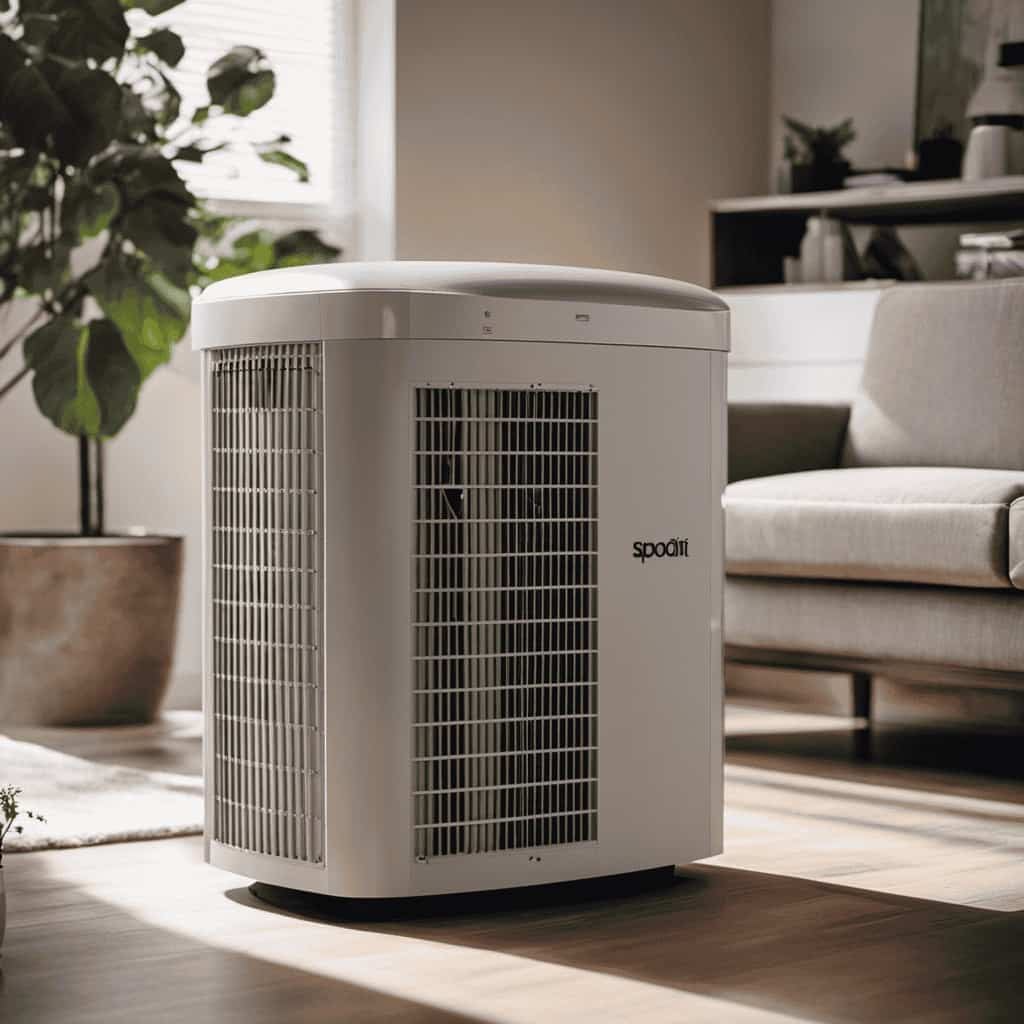
By considering these comparative efficiency standards, we can identify heat pumps that offer optimal energy efficiency and help reduce energy consumption in residential buildings.
This leads us to the next section, where we’ll explore how proper sizing and installation can further improve heat pump efficiency.
Improving Heat Pump Efficiency Through Proper Sizing and Installation
When it comes to improving heat pump efficiency, two important factors to consider are optimal sizing and proper installation.
A heat pump that’s too large or too small for the space it’s heating or cooling can result in decreased efficiency and higher energy consumption.
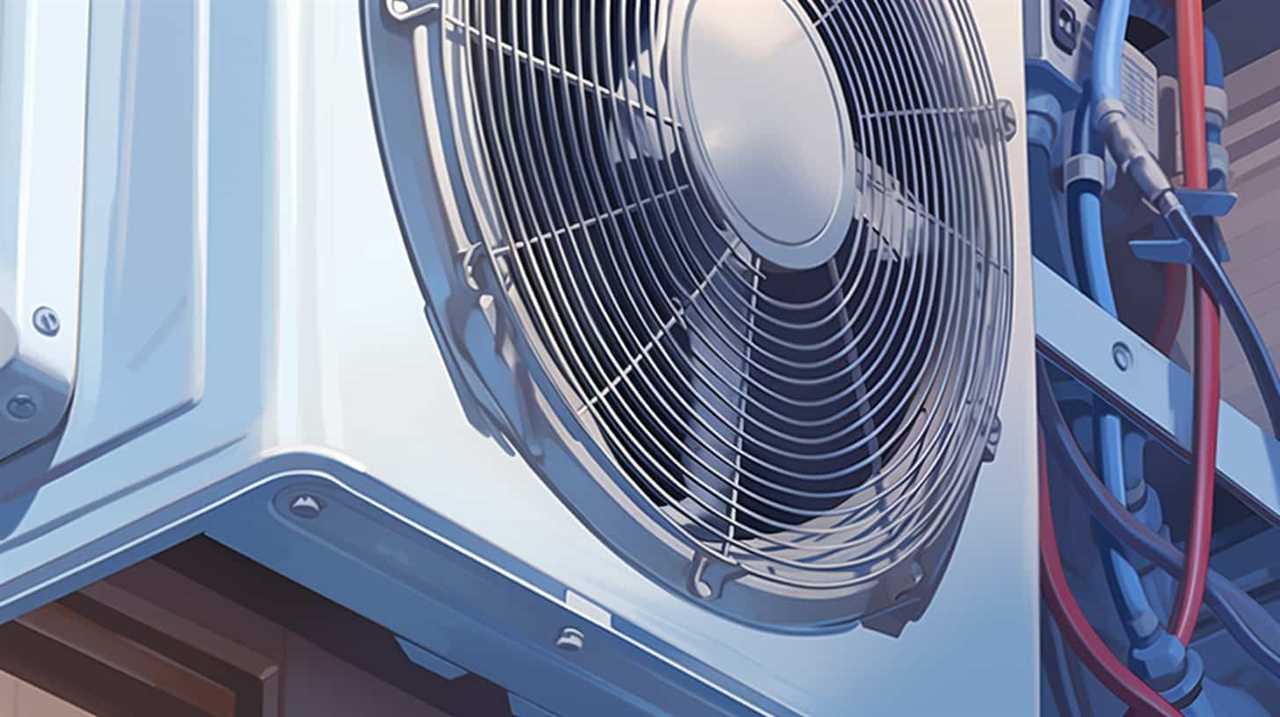
Additionally, the installation process plays a crucial role in the overall performance of the heat pump, as incorrect installation can lead to air leaks, poor airflow, and reduced efficiency.
Optimal Sizing Considerations
Properly sizing and installing a heat pump is crucial for optimizing its efficiency and performance. When considering the optimal size for a heat pump, there are several factors to take into account:
-
Energy Consumption:
-
Choosing a heat pump that’s appropriately sized for the heating and cooling needs of the space can help minimize energy consumption and reduce utility costs.
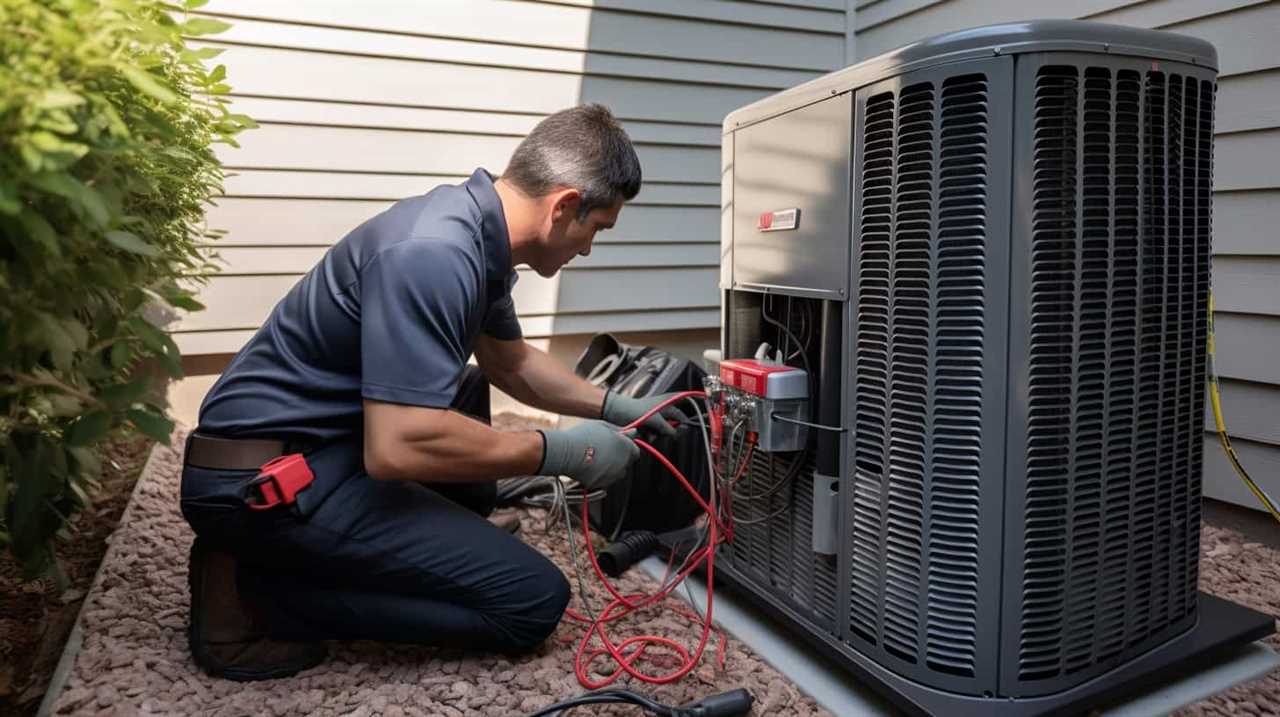
-
Undersized heat pumps may struggle to meet the desired temperature setpoints, leading to increased energy usage.
-
Oversized heat pumps can cycle on and off frequently, resulting in energy wastage.
-
Climate Considerations:
-
The climate of the installation location plays a significant role in determining the appropriate size of the heat pump.

-
Colder climates require larger heat pumps to provide sufficient heating capacity.
-
Warmer climates may require smaller heat pumps to avoid excessive cooling capacity.
Installation Impact on Efficiency
We can enhance heat pump efficiency by ensuring proper sizing and installation.
Effective installation techniques play a crucial role in optimizing energy consumption and overall performance of heat pump systems.

One key aspect is ensuring that the heat pump is appropriately sized for the specific heating and cooling demands of the space it serves. Undersized or oversized heat pumps can lead to decreased efficiency and increased energy consumption.
Proper installation techniques, such as correct ductwork design and installation, adequate insulation, and proper refrigerant charge, also contribute to improved efficiency.
By following industry best practices and guidelines, homeowners can maximize the efficiency of their heat pumps and reduce energy costs.
Transitioning into the subsequent section on optimizing heat pump performance with regular maintenance, it’s important to note that proper installation sets the foundation for long-term performance and efficiency.
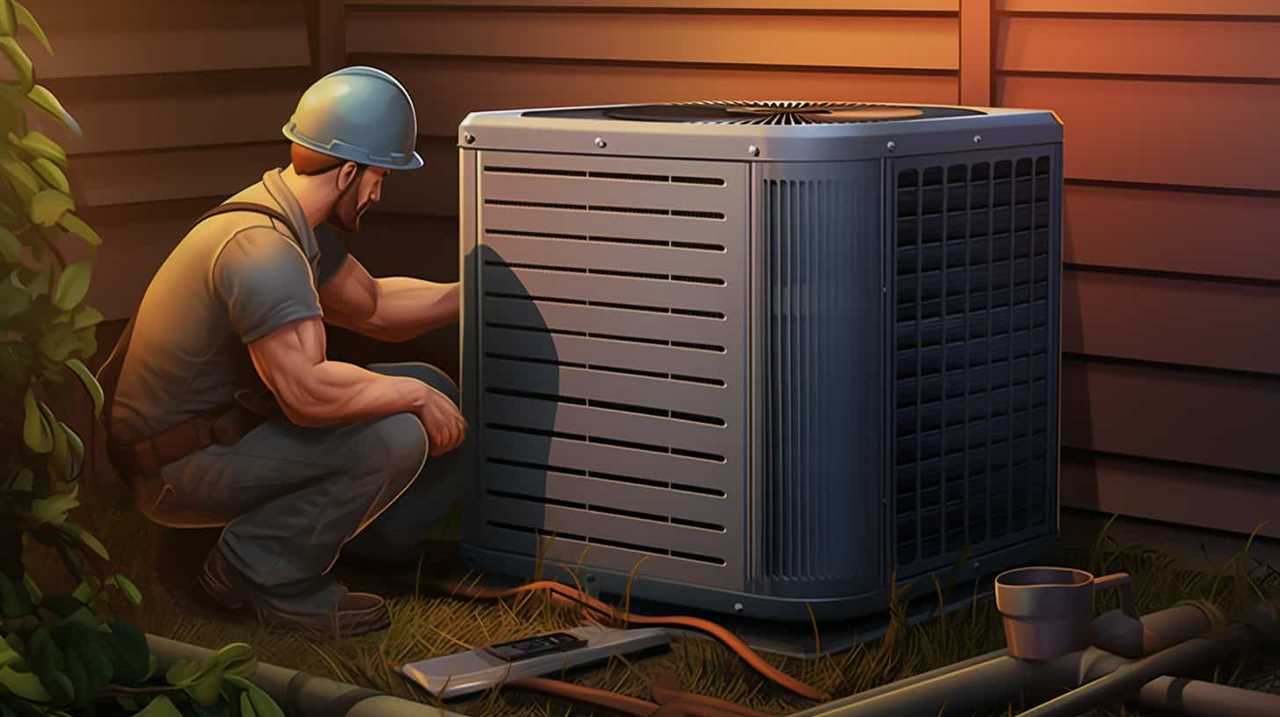
Optimizing Heat Pump Performance With Regular Maintenance
Regular maintenance is crucial for optimizing the performance of our heat pump. By following these heat pump maintenance tips, we can ensure that our system operates at peak efficiency and provides the maximum benefits of regular heat pump maintenance:
- Regularly clean and replace air filters to improve airflow and prevent strain on the system.
- Clean the outdoor unit to remove debris and maintain proper heat transfer.
- Check and adjust refrigerant levels to ensure optimal cooling and heating performance.
Proper maintenance not only improves the efficiency and performance of our heat pump but also extends its lifespan and reduces the risk of breakdowns. By investing in regular maintenance, we can enjoy long-term energy savings, improved comfort, and peace of mind.
Now, let’s delve into comparing different heat pump models for efficiency and performance.
Comparing Different Heat Pump Models for Efficiency and Performance
When comparing different heat pump models for efficiency and performance, it’s important to consider factors such as energy efficiency ratings, heating and cooling capacities, and overall performance.

With heat pump technology advancements, manufacturers have made significant improvements to enhance the efficiency and performance of these systems. Energy efficiency ratings, represented by the Seasonal Energy Efficiency Ratio (SEER) and Heating Seasonal Performance Factor (HSPF), provide a measure of how efficiently a heat pump operates. Higher SEER and HSPF ratings indicate better energy efficiency.
Heating and cooling capacities determine the ability of the heat pump to meet the heating and cooling demands of a space. Real-world performance analysis, based on field data and customer feedback, can provide valuable insights into the actual performance of different heat pump models.
This information helps consumers select the best heat pump for their specific needs, ensuring optimal efficiency and performance.
Frequently Asked Questions
How Does the Efficiency of a Heat Pump Affect My Energy Bills?
The efficiency of a heat pump directly impacts our energy bills. Factors such as proper installation, regular maintenance, and climate conditions can affect its performance. Maximizing efficiency reduces energy consumption and lowers costs.
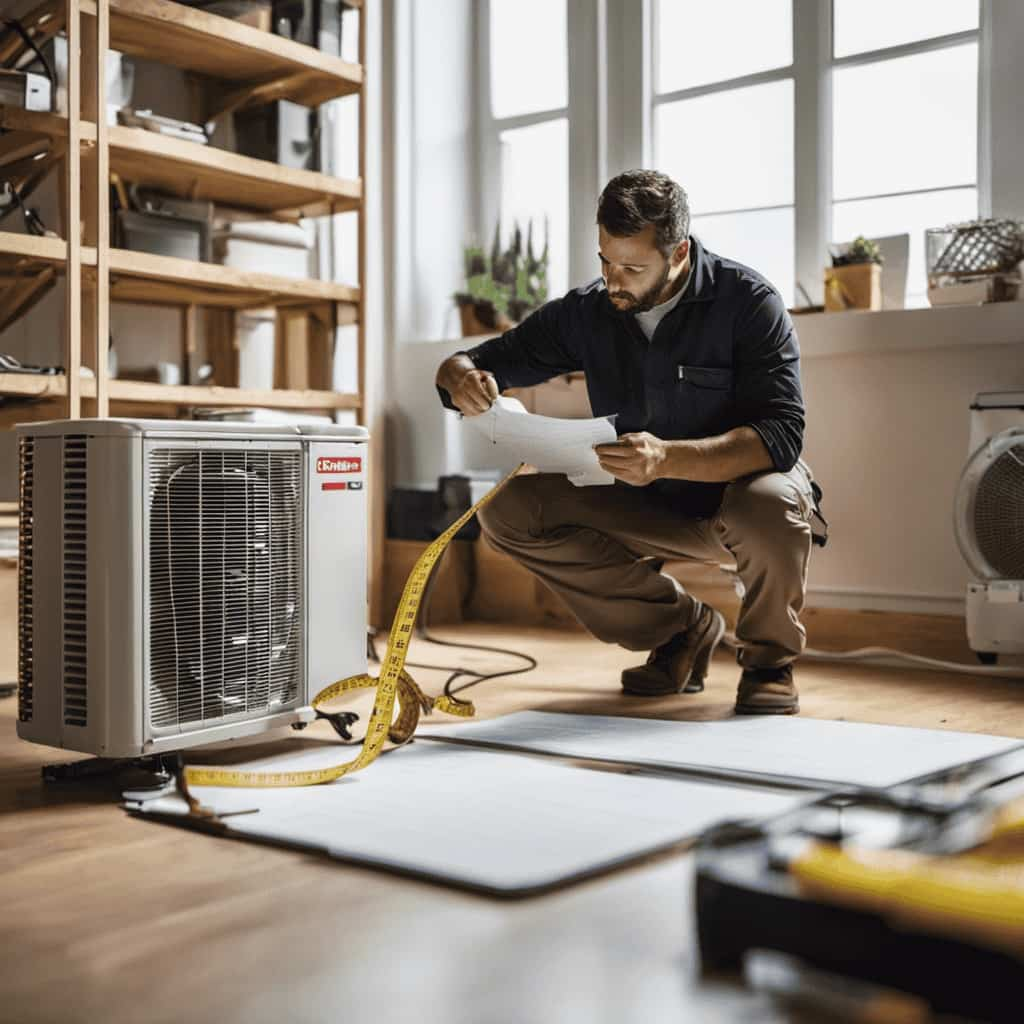
What Are the Common Factors That Can Impact the Performance of a Residential Heat Pump?
The performance of a residential heat pump can be impacted by various factors. The weather conditions, such as extreme temperatures, can affect its efficiency. Additionally, the insulation of the house plays a crucial role in optimizing the heat pump’s performance.
Are There Any Specific Energy Efficiency Ratings I Should Look for When Purchasing a Heat Pump?
When purchasing a heat pump, it is important to consider energy efficiency ratings. These ratings indicate the cost effectiveness of the heat pump and its ability to efficiently convert energy into heat or cool air.
Can Improper Sizing or Installation of a Heat Pump Affect Its Efficiency?
Improper sizing or installation of a heat pump can significantly impact its efficiency. This can result in higher energy costs and reduced performance. Common performance factors affected by improper sizing or installation include airflow, refrigerant charge, and ductwork design.
What Are Some Maintenance Tasks I Can Perform to Ensure Optimal Performance of My Heat Pump?
To ensure optimal performance of our heat pump, we can perform various maintenance tasks. These tasks include cleaning or replacing air filters regularly, checking and cleaning outdoor coils, and scheduling professional inspections for overall heat pump optimization.

Conclusion
In conclusion, exploring residential heat pump efficiency and performance is crucial for homeowners seeking to maximize energy savings and reduce environmental impact.
By understanding heat pump efficiency metrics, considering factors affecting performance, and evaluating energy efficiency ratings, homeowners can make informed decisions.
Proper sizing, installation, and regular maintenance are key to improving heat pump efficiency, while comparing different models allows for optimal performance.
Embracing these strategies is like harnessing the power of a well-tuned orchestra, where each instrument plays its role harmoniously, resulting in a symphony of energy efficiency.
